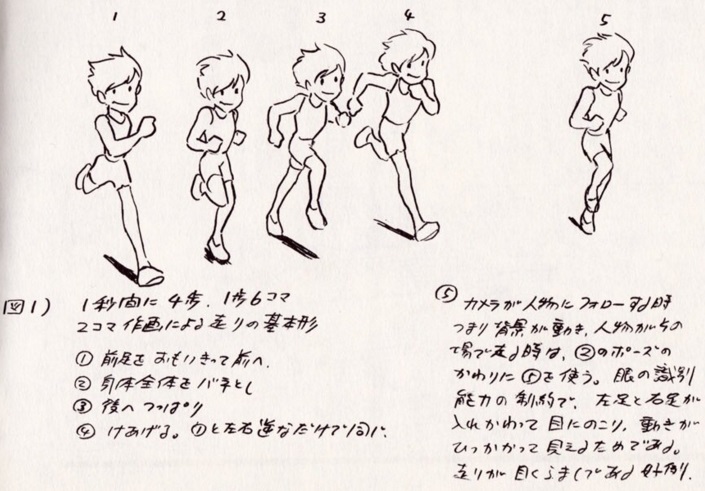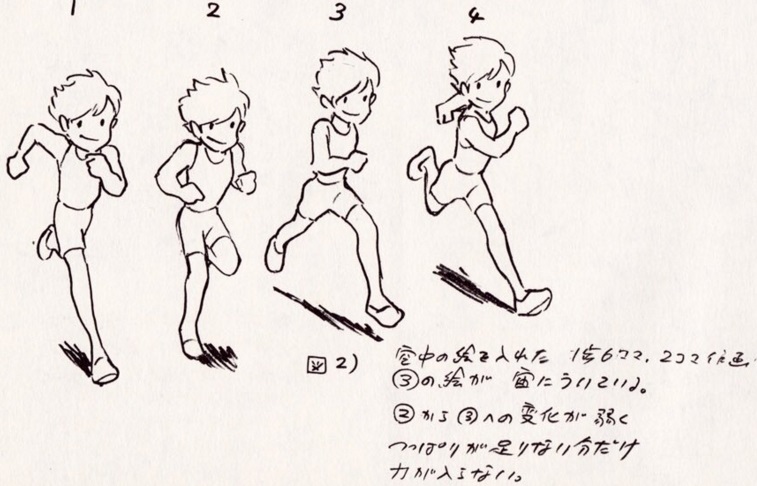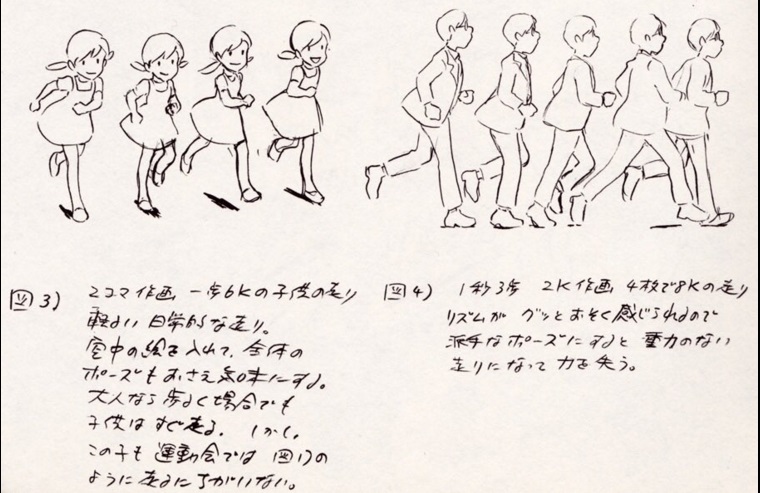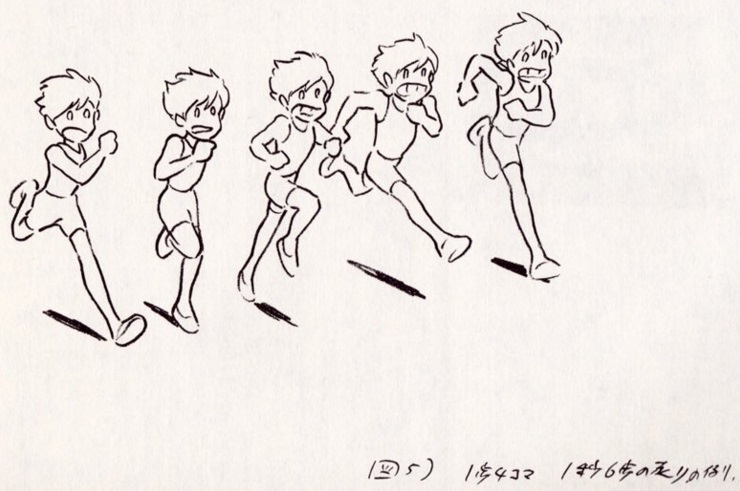
Earlier this week, we let you know about the animation software used by Hayao Miyazaki’s Studio Ghibli coming out in an open source version free to download. While this makes available to you a piece of the technology used in the service of such masterpieces as Princess Mononoke, Spirited Away, and The Tale of Princess Kaguya, it won’t, alas, get you any closer to possessing the artistic skills of the Ghibli team. To attain those, you’ve just got to engage in the same long, cyclical process of observation, replication, and refinement that you would when mastering anything.

Luckily, Miyazaki has provided plenty of examples to work with, and even, now and again in his long career, broken down his techniques for all to understand. Here we have four of his sketches, originally published in a 1980 issue of Animation Magazine (月刊アニメーション), which provide visual explanations of how to animate a character running — not an uncommon task, one imagines, for the Ghibli animators in charge of what the Creators Project calls “the constant running Miyazaki’s films are known for.” If you’ve ever tried to animate running yourself, you’ll know that what might at first seem like a simple, everyday physical action requires a great deal of subtlety to get right.

The early motion photographer Eadweard Muybridge gave the world a sense of this when he captured the mechanics of both men and horses running back in the 1880s, but to take those real-world observations and render them convincingly in animation — much less with the characteristic Ghibli smoothness — takes things to another level altogether. “Only Miyazaki man,” said animator LeSean Thomas when he tweeted these images. “Such effortless lines and silhouettes. Years of hard work & learning on display in these sketches!”

To those who wish to follow Miyazaki’s method of animating running in order to go on to making the kind of lavish cinematic stories he and his collaborators have, best of luck; to those who’d rather not put in the decades, well, you can still learn his method of making instant ramen.
via LeSean Thomas
Related Content:
Software Used by Hayao Miyazaki’s Animation Studio Becomes Open Source & Free to Download
Watch Hayao Miyazaki Animate the Final Shot of His Final Feature Film, The Wind Rises
How to Make Instant Ramen Compliments of Japanese Animation Director Hayao Miyazaki
Early Japanese Animations: The Origins of Anime (1917–1931)
Based in Seoul, Colin Marshall writes and broadcasts on cities, language, and style. He’s at work on a book about Los Angeles, A Los Angeles Primer, the video series The City in Cinema, the crowdfunded journalism project Where Is the City of the Future?, and the Los Angeles Review of Books’ Korea Blog. Follow him on Twitter at @colinmarshall or on Facebook.


Miyazaki is great and all, but I’m getting fatigued from the amount of coverage he gets on this blog. There are other interesting animators.
Like?
I would genuinely like to know because
I am a big fan of animation,
but nowadays, people are using too much cgi/ computer animation and not enough of the basics/fundamentals
of where it all came from.
Sure, its a new “form” of animation,
but in my opinion, it doesn’t look as clean as the 1980’s or 90’s
or even 2000’s for that matter
I mean sure the 2000’s had some computerized animation like toy story and incredibles
but in that time pixar did it right
and now all this 2D animation on 3D platforms is making everything look unnatural I mean I’ve seen some that look good and not saying that all are bad but I feel like the animation industry has lost it’s roots and needs to go back to the fundamentals of hand drawn good quality animation.
So I would actually like to know if there are other animators that are interesting as well